How to decrease oxalate levels.
In fact, they come from many of the healthy foods we love to eat every day. Oxalates, also known as oxalic acid, are organic substances found in a wide range of plant-based foods. While they serve important functions in plants, it's essential to explore how they form and their impact on human health.
Oxalates have a complex relationship with the human body. As with most things, in moderation they're not much of a problem. But in excess they can form crystals that can become a source of headaches, urinary pain, kidney stones, muscle pain, and joint pain. This week we explore why they form, where they come from, and some steps you can take to help mitigate oxalate production!
Check out Ed's oxalate protocol here:
The Plan for lowering Oxalates
1. Blood test: Blood testing for Oxalates is a screening and not a definitive answer for oxalates. This means that some who have higher than desired Oxalates may not be releasing any so the blood test may be normal yet in truth Oxalates could be an issue. If Oxalate blood levels are elevated then you know high levels are present. If low but have symptoms then start the diet to determine if issue.
2. Reducing intake of food oxalates is vital to success. If you are excreting oxalates at the same rate as your intake nothing will be gained. Learn the foods with the highest levels to know what to remove from your diet. The list is quite large however my issue was spinach, turmeric, potatoes, beets, all nuts except macadamia, beet greens, chia, chocolate, quinoa, and green tea. At this time I have found value in the app, OXIPUR. It is easy to reference when needed to locate the oxalate levels of foods.
3. Realize that as the oxalate crystals start excretion through your system that a “dumping syndrome” may occur. As you can imagine glass floating through the tissues of your body or urine, discomfort can be extreme. In fact detoxing oxalates can potentially be dangerous if too fast too soon. Dumping symptoms are very varied but will mostly focus on the chronic conditions that the individuals have previously experienced.
4. Introducing certain nutrients are essential to opening the detox pathways of oxalates. Without these avenues opened to remove oxalates you will not receive results even with eliminating the intake of oxalates in your diet.
A: P5P This is a special form of vitamin B-6. 100mg twice daily
B: Vitamin B1. I strongly prefer the form referred to as Benfotiamine. I find it is more effective than plain B1.
C: Calcium capsules or liquid. Calcium binds with oxalates so they are less likely to be deposited. Take one capsule twice daily with food.
D: Magnesium: 200 mg twice daily. Most forms are effective except oxide forms.
E: Biotin 5000mcg. I prefer sublingual but all forms are effective.
F: Sodium from healthy sources such as electrolyte formulas that contain sodium.
G: Lemon juice several times daily. Fresh if possible but brush teeth afterwards to prevent enamel damage.
H: Chanca Piedra is classically utilized to help process kidney stones but for those who want to jump start the program you can use this herb for a few weeks. However, dumping must be observed if symptoms become too severe and you must stop the chanca piedra at that point.
*The statements made in this video have not been evaluated by the Food and Drug Administration. This information is not intended to diagnose, treat, cure or prevent any disease. Please consult your health practitioner before starting any new health or supplementation regimen.
-----------------------------------------------------------------------
Nutrition World: https://www.nutritionw.com/
Shop: https://shop.nutritionw.com/s/1000-3/
Blog: https://www.nutritionw.com/blog/
Instagram: https://www.instagram.com/nutritionwo...
Facebook: https://www.facebook.com/nutritionw/
-
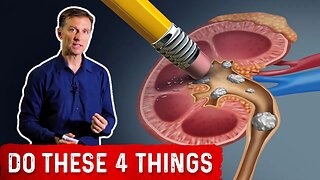 2:59
2:59
Dr. Eric Berg
2 years agoPreventing High Oxalate Kidney Stones
37 -
 1:01:54
1:01:54
the UK carnivore
6 months ago $0.29 earnedOxalates and More With Sally K Norton
4281 -
 2:57
2:57
Just In Health
1 year agoHow Does Low-Oxalate Diet Works and Its Food Sources
70 -
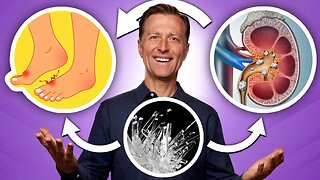 13:07
13:07
Dr. Eric Berg
1 year agoOxalates, Gout, and Kidney Stones
2021 -
 7:05
7:05
Dr. Eric Berg
5 months agoClean Out Your Kidneys of Oxalates and Stones - Dr. Berg
4.66K1 -
 14:21
14:21
Dr. Eric Berg
1 year agoClean Your Kidneys of Uric Acid and Oxalates
1.27K2 -
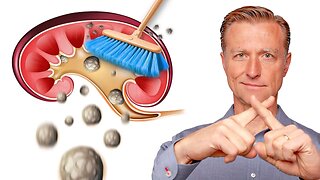 7:05
7:05
Dr. Eric Berg
4 months agoClean Out Your Kidneys of Oxalates and Stones - Dr. Berg
5.72K3 -
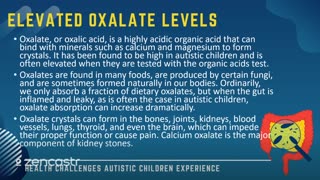 2:38
2:38
Children's Health Podcast
1 year ago45 of 63 - Elevated Oxalate Levels - Health Challenges Autistic Children Experience
72 -
 32:24
32:24
the UK carnivore
6 months ago $0.11 earnedToxic Superfoods: How Oxalate Overload is Making You Sick-and How to Get Better. Sally K Norton MPH
3851 -
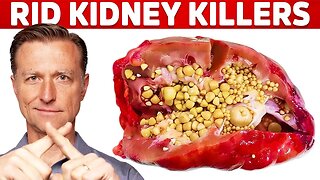 14:21
14:21
Dr. Eric Berg
1 year agoClean Your Kidneys of Uric Acid and Oxalates
77